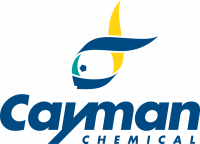Cookie preferences
This website uses cookies, which are necessary for the technical operation of the website and are always set. Other cookies, which increase the comfort when using this website, are used for direct advertising or to facilitate interaction with other websites and social networks, are only set with your consent.
Configuration
Technically required
These cookies are necessary for the basic functions of the shop.
"Allow all cookies" cookie
"Decline all cookies" cookie
CSRF token
Cookie preferences
Currency change
Customer-specific caching
FACT-Finder tracking
Individual prices
Selected shop
Session
Comfort functions
These cookies are used to make the shopping experience even more appealing, for example for the recognition of the visitor.
Note
Show the facebook fanpage in the right blod sidebar
Statistics & Tracking
Affiliate program
Conversion and usertracking via Google Tag Manager
Track device being used

| Item number | Size | Datasheet | Manual | SDS | Delivery time | Quantity | Price |
|---|---|---|---|---|---|---|---|
| Cay13713-100 | 100 µg | - |
6 - 10 business days* |
530.00€
|
If you have any questions, please use our Contact Form.
You can also order by e-mail: info@biomol.com
Larger quantity required? Request bulk
You can also order by e-mail: info@biomol.com
Larger quantity required? Request bulk
Ion channels are integral membrane proteins that help establish and control the small voltage... more
Product information "Anti-KCNQ4 Potassium Channel Monoclonal Antibody (Clone N43-6)"
Ion channels are integral membrane proteins that help establish and control the small voltage gradient across the plasma membrane of living cells by allowing the flow of ions down their electrochemical gradient. They are present in the membranes that surround all biological cells and their main function is to regulate the flow of ions across this membrane. Whereas some ion channels permit the passage of ions based on charge, others conduct based on an ionic species, such as sodium or potassium. Furthermore, in some ion channels, the passage is governed by a gate which is controlled by chemical or electrical signals, temperature, or mechanical forces. There are a few main classifications of gated ion channels. There are voltage-gated ion channels, ligand-gated, other gating systems, and finally those that are classified differently, having more exotic characteristics. The first are voltage-gated ion channels which open and close in response to membrane potential. These are then separated into sodium, calcium, potassium, proton, transient receptor, and cyclic nucleotide-gated channels, each of which is responsible for a unique role. Ligand-gated ion channels are also known as ionotropic receptors, and they open in response to specific ligand molecules binding to the extracellular domain of the receptor protein. The other gated classifications include activation and inactivation by second messengers, inward-rectifier potassium channels, calcium-activated potassium channels, two-pore-domain potassium channels, light-gated channels, mechano-sensitive ion channels, and cyclic nucleotide-gated channels. Finally, the other classifications are based on less normal characteristics such as two-pore channels and transient receptor potential channels. The protein encoded by this gene forms a potassium channel that is thought to play a critical role in the regulation of neuronal excitability, particularly in sensory cells of the cochlea. The current generated by this channel is inhibited by M1 muscarinic acetylcholine receptors and is activated by retigabine, a novel anti-convulsant drug.Immunogen: Fusion protein amino acids 2-77 of human KCNQ. Clone Designation: N43-6. Formulation: (Request formulation change), 100 µg of protein G-purified monoclonal antibody. Storage Buffer: PBS, pH 7.4, with 50% glycerol and 0.09% sodium azide. Host: Mouse. Isotype: IgG1. Applications: ICC/IF, IHC, IP, WB. UniProt Accession #: P56696. Origin: Animal/Mouse.
| Keywords: | Anti-KCNQ4, Anti-KQT-like 4, Anti-Potassium channel subunit alpha KvLQT4, Anti-Voltage-gated potassium channel subunit Kv7.4, Anti-Potassium voltage-gated channel subfamily KQT member 4 |
| Supplier: | Cayman Chemical |
| Supplier-Nr: | 13713 |
Properties
| Application: | ICC, IP, WB |
| Antibody Type: | Monoclonal |
| Clone: | S43-6 |
| Conjugate: | No |
| Host: | Mouse |
| Species reactivity: | human |
| Immunogen: | fusion protein amino acids 2-77 of human KCNQ |
| Format: | Purified |
Database Information
| KEGG ID : | K04929 | Matching products |
| UniProt ID : | P56696 | Matching products |
Handling & Safety
| Storage: | -20°C |
| Shipping: | -20°C (International: -20°C) |
Caution
Our products are for laboratory research use only: Not for administration to humans!
Our products are for laboratory research use only: Not for administration to humans!
Information about the product reference will follow.
more
You will get a certificate here
Viewed






